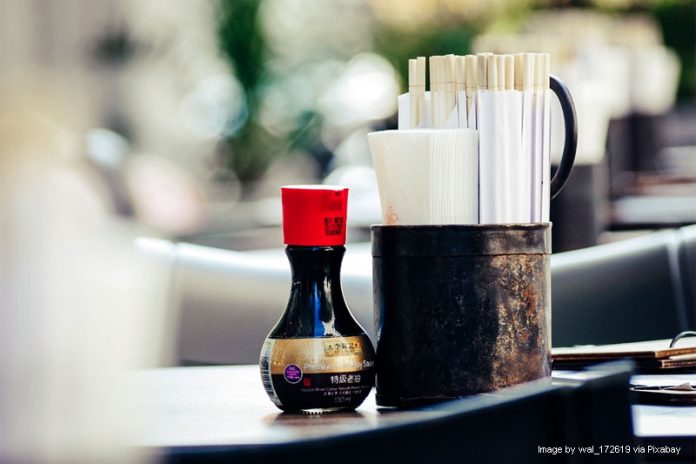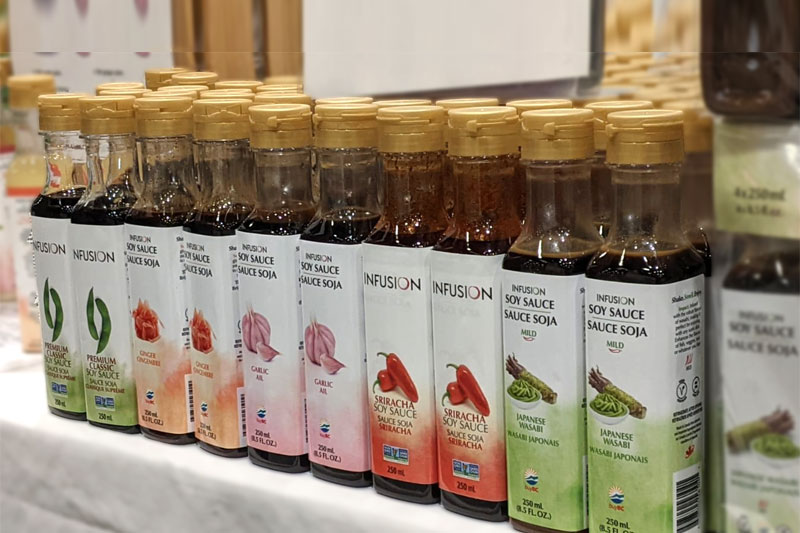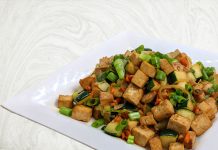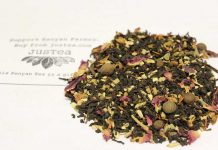
Infused soy sauces bring bold, innovative flavours to a timeless condiment, enhancing dishes and bridging culinary traditions around the globe.
Infused soy sauces are transforming a centuries-old condiment into a modern culinary essential. Picture a steaming plate of beef fried rice noodles, glistening with rich, dark soy sauce that clings to every strand.
With your first bite, the savory umami of the soy sauce elevates the tender, perfectly seasoned beef and noodles to new heights.
Rooted in over 2,500 years of tradition in China, soy sauce has evolved significantly. Today’s infused varieties go beyond the typical salty umami profile, incorporating bold ingredients like garlic, ginger, Sriracha, and wasabi.
This innovative approach creates a dynamic range of flavours that invites adventurous palates to explore new culinary experiences.
Flavours for All Seasons
In Canada, Infusion Premium Foods is at the forefront of this trend, offering five distinct flavours: Premium Classic, Sriracha for Heat, Ginger for Sweetness, and Garlic for Depth. Each variety enhances a wide array of dishes.
Owner Jason Nichol emphasizes, “Our sauces are made from traditionally brewed Japanese soy sauce, aged for six months, and infused with real ingredients like ginger, garlic, peppers, and wasabi.”
Nichol’s personal favorite is the garlic flavour, which adds rich depth to any meal. The sauces are available for purchase online at infusionsoysauces.com or at select grocery stores in Metro Vancouver.
These infused sauces cater to modern dietary preferences, featuring lower sodium, gluten-free, sugar-free, and keto-friendly options while maintaining rich umami flavours.
The Premium Classic offers a unique traditional taste, while Sriracha provides a spicy kick perfect for marinades and stir-fries.
Ginger lends a sweet touch ideal for seafood, and garlic enhances meats and roasted vegetables. Wasabi adds a bold finish to sushi and grilled dishes.

The versatility of infused soy sauces extends well beyond Asian cuisine. They make excellent marinades for steak, salmon, and even grilled vegetables, adding depth and flavour to any dish.
For a standout experience, try marinating salmon in a blend of ginger, garlic, and Sriracha-infused soy sauces before grilling it to perfection. The heat of the Sriracha complements the fish beautifully, creating a dish that’s both vibrant and savory.
Soy Sauce as a Key Ingredient Across Cultures
Interestingly, the Inuit have embraced soy sauce as their condiment of choice for Arctic char and other seafood.
In British Columbia, soy sauce has become an essential part of indigenous cuisine, highlighting its adaptability across various culinary traditions.
As celebrity chef Martin Yan puts it, “If I could only have one type of food with me, I would bring soy sauce. The reason being that if I have soy sauce, I can flavour a lot of things.”
Chefs increasingly incorporate infused soy sauces as essential ingredients, not merely as condiments. Their ability to enhance everyday dishes without extensive preparation allows for broader flavour exploration.
Tips for Buying Soy Sauce
When selecting soy sauce, pay attention to the ingredients listed on the label. Check if the soy sauce is fermented or chemically hydrolyzed. Avoid chemically hydrolyzed soy sauces; their harsh flavour can overwhelm your dish and may be unhealthy.
According to Chem 13 News Magazine, “a chemically-hydrolyzed soy sauce is high in added sugars. A typical label will note the contents as: water, glucose-fructose, salt, caramel, hydrolyzed soy protein, corn syrup, citric acid, and sodium benzoate.”
Understanding traditional soy sauces adds depth to these innovations. Chinese soy sauce, made from fermented soybeans and wheat, has both light and dark varieties. Light soy sauce is saltier, while dark soy sauce is thicker and richer for marinades.
In contrast, Japanese tamari, brewed with little to no wheat, offers a gluten-free option with a complex flavour profile and deep umami notes. A guide to soy sauce varieties can be found at serious eats.
The journey of soy sauce from ancient China to contemporary kitchens underscores its enduring appeal. As a staple of Asian cuisine, it transcends cultural barriers, remaining a beloved ingredient worldwide.
The rise of infused versions reflects a growing interest in flavour exploration, ensuring soy sauce’s relevance in the ever-evolving food landscape.
For chefs and home cooks alike, soy sauce remains an indispensable ingredient. It not only enhances dishes but also embodies a rich story of culinary history and global unity.
With infused varieties, the journey into flavour opens exciting new culinary horizons, inviting everyone to discover and enjoy these bold tastes.







































